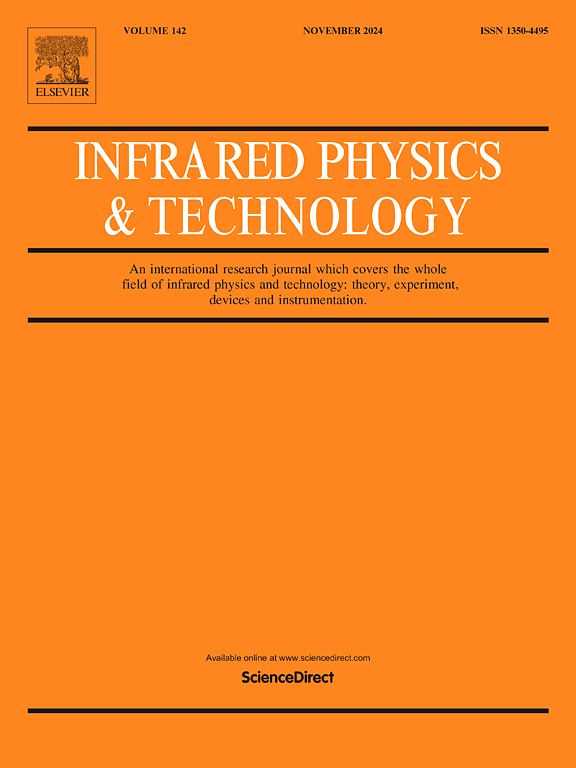Frequency noise in Terahertz dual-comb spectroscopy using two repetition-frequency stabilized and synchronized femtosecond lasers
IF 3.1
3区 物理与天体物理
Q2 INSTRUMENTS & INSTRUMENTATION
引用次数: 0
Abstract
Terahertz (THz) dual-comb spectroscopy (THz-DCSS) is a competitive spectral technique due to its high frequency resolution. However, because the pump and detection femtosecond (fs) pulses are from two stabilized fs lasers, the perfect mutual coherence is difficult to reach, which prohibits long time data average and improving frequency resolution. Here, two frequency noise sources, the residual unlocked and transferred ones are investigated for a THz dual comb spectrometer (THz-DCSM). In time domain, the amplitude noise plays a dominate role on the performance of THz-DCSS; the repetition-frequency noises are negligible within Fourier-transform frequency resolution. In frequency domain, the relative synchronization error originating from the instantaneous frequency differences between the two fs lasers is 4 × 10-13 ; the relative frequency resolution is ∼ 4 × 10-10, limited by the radio frequency reference. Our investigations are helpful for improving the performance of THz-DCSS and developing high frequency resolution THz spectroscopy.
使用两个重复频率稳定和同步飞秒激光器的太赫兹双梳光谱中的频率噪声
太赫兹(THz)双梳光谱(THz- dcss)由于其高频率分辨率而成为一种有竞争力的光谱技术。然而,由于泵浦飞秒脉冲和探测飞秒脉冲来自两个稳定的飞秒激光器,难以达到完美的互相干性,阻碍了长时间数据平均和提高频率分辨率。本文研究了太赫兹双梳状谱仪(THz- dcsm)的两种频率噪声源,即剩余非锁定噪声源和转移噪声源。在时域上,幅度噪声对太赫兹- dcs的性能起主导作用;在傅里叶变换频率分辨率范围内,重复频率噪声可以忽略不计。在频域,由两束激光瞬时频率差引起的相对同步误差为4 × 10-13 (Δf/f);相对频率分辨率为~ 4 × 10-10,受射频参考的限制。本文的研究对提高太赫兹- dcs的性能和发展高频分辨太赫兹光谱具有重要意义。
本文章由计算机程序翻译,如有差异,请以英文原文为准。
求助全文
约1分钟内获得全文
求助全文
来源期刊
CiteScore
5.70
自引率
12.10%
发文量
400
审稿时长
67 days
期刊介绍:
The Journal covers the entire field of infrared physics and technology: theory, experiment, application, devices and instrumentation. Infrared'' is defined as covering the near, mid and far infrared (terahertz) regions from 0.75um (750nm) to 1mm (300GHz.) Submissions in the 300GHz to 100GHz region may be accepted at the editors discretion if their content is relevant to shorter wavelengths. Submissions must be primarily concerned with and directly relevant to this spectral region.
Its core topics can be summarized as the generation, propagation and detection, of infrared radiation; the associated optics, materials and devices; and its use in all fields of science, industry, engineering and medicine.
Infrared techniques occur in many different fields, notably spectroscopy and interferometry; material characterization and processing; atmospheric physics, astronomy and space research. Scientific aspects include lasers, quantum optics, quantum electronics, image processing and semiconductor physics. Some important applications are medical diagnostics and treatment, industrial inspection and environmental monitoring.

 求助内容:
求助内容: 应助结果提醒方式:
应助结果提醒方式:


